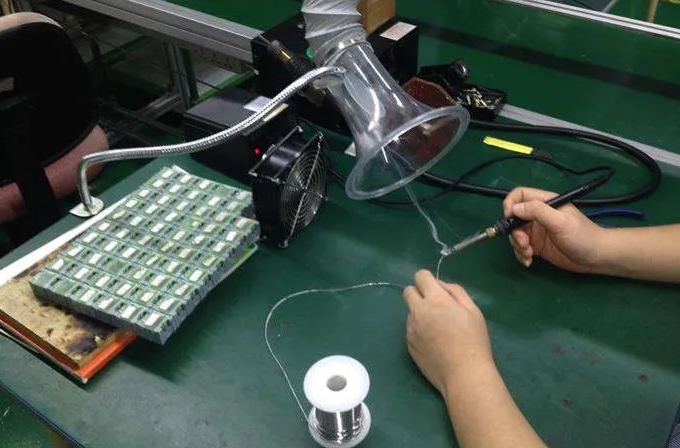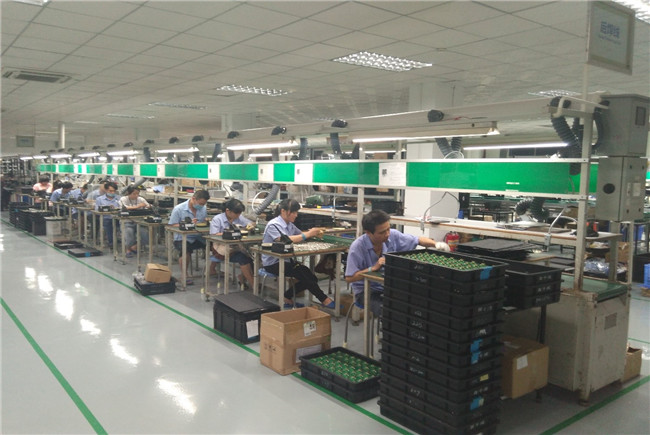Are you an electronics hobbyist looking to stay safe while working on your projects? Electronics assembly can be exciting, but it comes with risks like soldering fumes, lead exposure, and static damage. In this guide, we’ll cover essential safety tips to prevent accidents and injuries in your workshop. From proper ventilation for soldering fumes safety to ESD protection and eye safety, we’ve got you covered with practical advice you can apply right away.
Whether you’re soldering a circuit board or assembling components, safety should always come first. Let’s dive into the key areas of electronics assembly safety—soldering fumes safety, lead exposure, ESD protection, eye protection, and workshop ventilation—to ensure your workspace is secure and hazard-free.
Why Electronics Assembly Safety Matters
Working with electronics might seem harmless compared to heavy machinery, but the dangers are real. A small mistake, like inhaling toxic soldering fumes or ignoring ESD protection, can lead to health issues or damaged projects. For hobbyists, a safe workshop isn’t just about avoiding injury—it’s about protecting your passion and your gear. According to the Occupational Safety and Health Administration (OSHA), improper handling of soldering materials can lead to respiratory issues over time. Let’s explore how to minimize these risks with actionable steps tailored for electronics enthusiasts.

1. Soldering Fumes Safety: Protecting Your Lungs
Soldering is a core skill for electronics hobbyists, but the fumes it produces can harm your health. These fumes come from the flux in solder, which releases chemicals like rosin when heated. Long-term exposure can cause breathing problems or irritation to your eyes and throat. So, how do you ensure soldering fumes safety in your workshop?
- Use a Fume Extractor: Invest in a small fume extractor with a carbon filter. These devices pull fumes away from your face and trap harmful particles. A decent model costs around $50–$100 and can significantly reduce exposure.
- Work in a Ventilated Area: If a fume extractor isn’t an option, solder near an open window or use a small desk fan to blow fumes away. Never solder in a closed room without airflow.
- Wear a Mask: A simple N95 mask can block some particles, though it’s not as effective as a fume extractor. Use it as a backup if ventilation is limited.
I remember my first soldering project—a simple LED circuit. I didn’t think much about ventilation and ended up with a headache from the fumes after just 30 minutes. That taught me the importance of soldering fumes safety. Don’t make the same mistake—set up proper ventilation or extraction before you start.

2. Lead Exposure: Handling Solder Safely
Many solders contain lead, a toxic metal that can cause serious health issues if mishandled. Lead exposure during soldering happens through skin contact or inhaling dust and fumes. Over time, it can affect your nervous system, kidneys, and even memory. Protecting yourself from lead exposure is critical for long-term safety.
- Choose Lead-Free Solder: Opt for lead-free solder whenever possible. It’s safer and widely available, though it requires slightly higher temperatures (around 300°C vs. 260°C for leaded solder) to melt. Brands like Kester offer reliable lead-free options.
- Wash Hands After Soldering: Always wash your hands with soap and water after handling solder. Lead residue can linger on your skin and transfer to food or your mouth.
- Avoid Eating or Drinking Near Your Workspace: Keep snacks and drinks out of your workshop to prevent accidental ingestion of lead particles.
Lead exposure isn’t just a theoretical risk. Studies from the University of California, San Diego, highlight that improper handling of lead solder can lead to chronic health effects like joint pain and concentration issues. As a hobbyist, I’ve switched to lead-free solder for peace of mind, even if it means adjusting my soldering iron settings. It’s a small price to pay for safety.
3. ESD Protection: Saving Your Components from Static Damage
Electrostatic discharge (ESD) is a silent killer in electronics assembly. A tiny static shock—often less than 100 volts, which you can’t even feel—can fry sensitive components like microcontrollers or transistors. ESD protection is essential to prevent costly damage to your projects.
- Use an ESD Wrist Strap: Connect a wrist strap to a grounded surface to discharge static from your body. A good strap costs under $10 and is a must-have for any hobbyist.
- Work on an ESD Mat: Place an anti-static mat on your workbench. These mats dissipate static and protect components. They often come with a grounding cord to connect to an outlet’s ground pin.
- Store Components Safely: Keep sensitive parts in anti-static bags or containers until you’re ready to use them. This prevents static buildup during storage.
I’ve lost a $15 microcontroller to ESD before, and it was a frustrating lesson. Now, I never work without my wrist strap clipped on. For hobbyists, ESD protection isn’t optional—it’s a small investment that saves big headaches. Recent posts on social platforms like X also emphasize the importance of ESD-safe workspaces, showing how even a small discharge can disrupt circuits without direct contact.

4. Eye Protection: Shielding Your Vision from Hazards
Your eyes are vulnerable during electronics assembly. Hot solder can splash, components can snap, and even bright lights from soldering irons or inspection tools can strain your vision. Eye protection is a simple but often overlooked safety measure.
- Wear Safety Glasses: Use lightweight safety glasses rated for impact resistance. They cost as little as $5 and protect against solder splashes or flying debris.
- Avoid Rubbing Your Eyes: If solder fumes irritate your eyes, step away and rinse with clean water. Rubbing can worsen irritation or introduce contaminants.
- Use Proper Lighting: Work under a bright, focused light (like a 500-lumen desk lamp) to reduce eye strain while inspecting small components.
A hobbyist shared a story on social media about solder exploding due to trapped resin, with tiny balls hitting their glasses. Without eye protection, that could have been a serious injury. I always keep a pair of safety glasses on my bench now, even for quick jobs. Don’t take chances with your vision.
5. Workshop Ventilation: Creating a Safe Environment
Poor workshop ventilation can trap harmful fumes and dust, making your workspace a health hazard. Good airflow is vital for soldering fumes safety and overall comfort, especially if you spend hours tinkering with projects. Let’s look at how to improve workshop ventilation.
- Install an Exhaust Fan: A small exhaust fan (rated at 100–200 CFM) near your workbench can pull fumes out of the room. Place it near a window for best results.
- Use Cross-Ventilation: Open windows on opposite sides of your workshop to create a breeze that carries fumes away. Add a fan if natural airflow is weak.
- Keep Your Space Clean: Dust and debris can worsen air quality. Vacuum your workbench weekly and store chemicals in sealed containers to minimize airborne particles.
When I first set up my workshop in a small garage, I didn’t think about ventilation. After a few sessions, I noticed a lingering smell of flux and felt dizzy. Adding a $30 exhaust fan made a huge difference. Proper workshop ventilation isn’t just about comfort—it’s about keeping your air safe to breathe.
Additional Safety Tips for Electronics Hobbyists
Beyond the main areas we’ve covered, here are a few extra tips to keep your workshop safe:
- Unplug Your Soldering Iron: Always unplug your iron when not in use. A hot tip (often 300°C or more) can cause burns or start a fire if left unattended.
- Organize Your Workspace: Keep tools and components in labeled bins to avoid clutter. A messy bench increases the risk of accidents like knocking over a hot iron.
- Learn Basic First Aid: Keep a first aid kit with burn ointment and bandages in your workshop. Quick response to minor injuries can prevent bigger issues.
Safety isn’t a one-time checklist—it’s a habit. I’ve made it a rule to double-check my setup before starting any project, and it’s saved me from potential mishaps more than once.
Conclusion: Build Safely, Create Confidently
Electronics assembly is a rewarding hobby, but it’s not without risks. By focusing on soldering fumes safety, minimizing lead exposure, using ESD protection, wearing eye protection, and ensuring proper workshop ventilation, you can prevent accidents and injuries in your workshop. Start with small changes—like adding a fume extractor or wearing a wrist strap—and build a safer workspace over time.
 ALLPCB
ALLPCB







